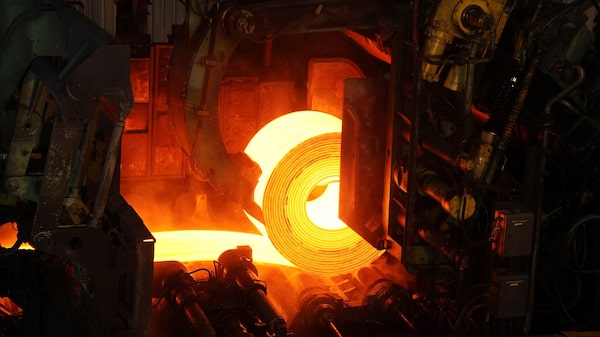Bloomberg Línea — Inflation has become one of the main obstacles to economic growth regionally and globally, with the International Monetary Fund (IMF) forecasting that high prices in Latin America will peak at their highest in 25 years in 2022, challenging the recovery the countries were counting on following the Covid-19 crisis.
And while top executives at the region’s companies are trying to navigate that storm, and which is reflected during their calls with investors to discuss second-quarter financial results, they have also expressed other concerns.
Bloomberg Línea has taken a look at the companies that have already reported results through the week ended August 26, as well as examining the results of the stock exchanges of Brazil, Mexico, Argentina, Colombia, Chile and Peru, whose main indices group together more than 200 companies.
Regardless of terms related to financial projections, such as guidance or revenues, inflation and price rises were the two most frequently mentioned terms in the calls. However, the year-over-year trend is also beginning to show the growing concern among business leaders about slower economic growth, amid increasingly persistent signs that the world is headed for a recession.
The specter of inflation
Aggregating the results from Latin America’s six largest stock exchanges, mentions of the high cost of living total 1,049, and although that is showing a downward trend compared to conference calls regarding results from the first quarter of this year, it continues to be the main headache for senior management.
The concern reflects the same warnings issued by the IMF and central banks in the region and the world. The Washington-based agency estimates that inflation in Latin America will hit 12.1% this year and remain above 8% in 2023.
Concerns regarding high prices are being felt across several industries. For example, in Brazil, the region’s largest economy, Companhia Siderurgica Nacional (CSNA3) drew attention to the impact of rising prices, increases in raw materials, fuel and transportation.
“We had full production. We decided to slow down production to do it with an excellent cost, that is, to produce what would be more favorable in terms of costs,” said the company’s CFO Marcelo Cunha Ribeiro.
A similar scenario was heard on the call of Marfrig (MRFG3), the second largest Brazilian food processing company. Tim Kelin, the company’s CEO, assured that beef demand was affected by inflation and negative consumer sentiment.
Something similar happened at beauty product giant Natura (NTCO3), as its CEO, Fabio Barbosa, warned that the second quarter was difficult as the company faced high inflation, lower consumer spending and problems in supply chains.
But this balance is not limited to Brazil. In the companies listed on the stock markets of Mexico, Argentina, Chile and Colombia, high prices are also the most frequently mentioned issue. The exception is Peru, where concerns about copper prices prevail over all others.
In Argentina, where annual inflation is projected to exceed 70%, the risks due to the rising cost of living were mentioned in the investor calls by companies such as Cablevision (CVH), Loma Negra (LOMA) and Central Puerto (CEPU).
The same is also true in Chile and Colombia. In the analysis of companies listed on the Chilean stock market index IPSA, mentions of inflation show an increase of 127% year-on-year, which is in line with a consumer price index that in July reported its highest variation in 28 years.
Patricio Jottar, general manager of CCU (CCU), said that the company’s operation was negatively affected by “the increase in raw material prices, the strong depreciation of our main local currencies against the US dollar, and higher inflation levels”.
On the other hand, among companies listed on Colombia’s COLCAP index, companies such as Cementos Argos (CEMARGOS), Mineros (MINEROS), Bancolombia (BCOLO) and Grupo Argos (GRUPOARG) also warned about high inflation levels.
“Cost inflation and difficulties in the logistics chain, due to strong demand and energy shortages in some markets, were the main challenges during the quarter,” said Juan Esteban Calle, president of Cementos Argos.
Alan Wancier, CFO of Mineros, explained that there was a 6% increase in costs in the quarter, explained in part “by higher fuel prices due to inflation”.
In the case of Peru, the main concern has to do with the fall in the price of copper, which has been affected by the performance of the Chinese economy.
Companies such as Southern Copper (SCCO) warned that the behavior of the international market affected their quarterly results.
Doubts about economic growth
Along with the specter of inflation, there is another issue that is beginning to be mentioned more frequently by senior management: the slowdown in economic growth.
When the results of the six largest stock exchanges in the region are grouped together, a 280% year-on-year increase in terms related to slower economic growth is obtained, the highest among all the other mentions.
“Our profit fell in the quarter, impacted by operating and financial expenses. We are not comfortable with this short-term performance, but it is essential to understand that the macro scenario is unfavorably playing against us (...). This is happening all over the world. Inflation and recession aggravated by the attention and threat of conflicts, in addition to the pandemic that has not yet ended,” said Bruno Blatt, CEO of Qualicorp (QUAL3).
Claudio Soto, chief economist at Banco Santander Chile (BSAN), warned that the bank expects the economy to continue to slow throughout the year, while José Ramírez of Grupo Financiero Banorte (GFNORTEO) warned that “a possible recession in the US could translate into lower external demand for Mexico, lower investments and remittances, resulting in lower GDP growth, especially by 2024″.
While some Latin American economies are benefiting from high commodity prices, both the IMF and the Economic Commission for Latin America and the Caribbean (ECLAC) have already warned that the region is headed for a slower growth trend.
In July, while revising upward its forecast for 2022, the IMF lowered its estimate for next year, citing the challenges posed by high inflation and the response of central banks. And last week, ECLAC used the same tone and warned that the region will show a performance similar to the one it had before the pandemic, with the aggravating factor neing that there are 16 countries in the region that will not have recovered the levels they had seen before Covid-19.






